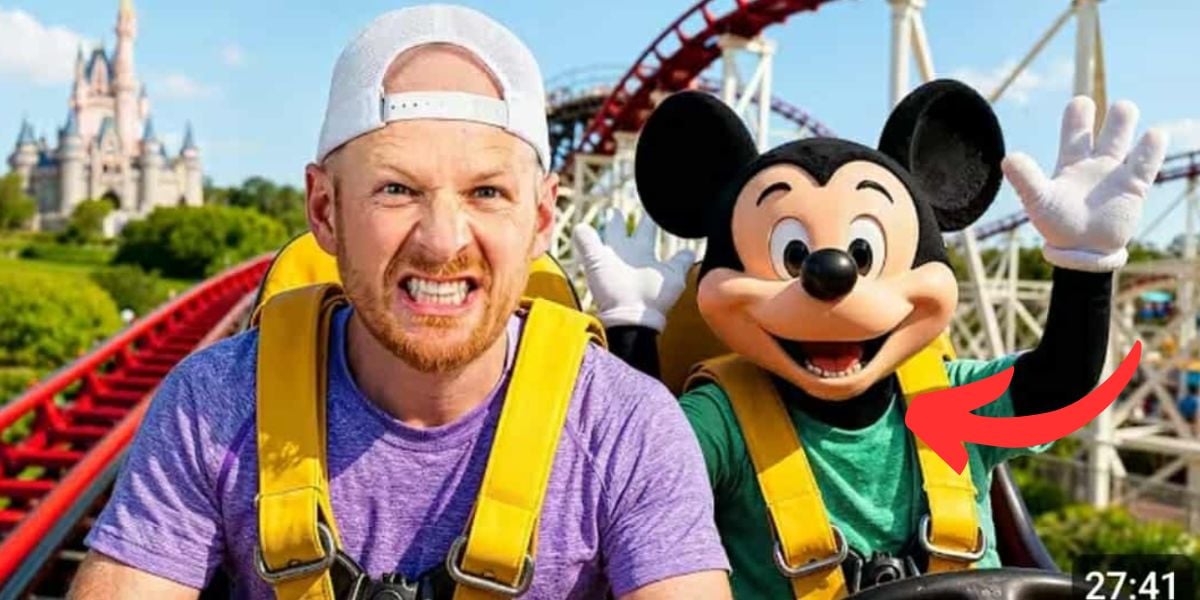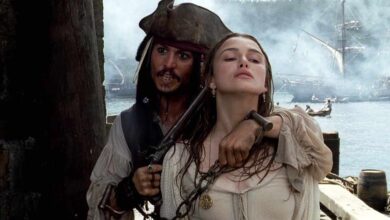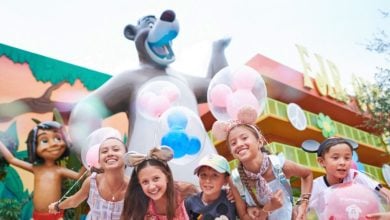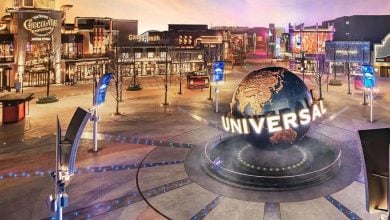Disney Pushes Viral Video Featuring AI Mickey With Altered Facial Features
It’s not every day that a creator pulls off a globe-spanning Disney feat and lands a spot in the record books. And it’s even rarer that Disney is the one stepping on its own win.
This week, YouTube sensation Dude Perfect dropped a massive Disney-sponsored video chronicling their attempt to break the world record for the fastest time to visit every Disney park on the planet. From Hong Kong to California, they tackled it all in just 74 hours and 14 minutes, setting a new record and generating major buzz. But what’s got fans talking—and not in a good way—has nothing to do with the parks.
Instead, it’s the AI-generated image of Mickey Mouse in the video’s thumbnail that has Disney fans raising eyebrows, and Disney critics rolling their eyes. Why? Because Disney itself is reposting the video across social media, fully endorsing the image of their most sacred character rendered with what many are calling “horrifyingly tiny human teeth.”
Disney Parks keep embarrassing themselves.
Stare into the abyss of AI Mickey’s teeth. pic.twitter.com/Kg0mSzPCaT
— Futureport 82 (@futureport82) October 5, 2025
Let’s talk about why that matters—and why this move is striking a nerve in a fandom already worried about the direction Disney is headed.
The Challenge: 12 Parks, 5 Countries, 3 Continents… and a Timer
Before we dive into the controversy, let’s give credit where it’s due: Dude Perfect’s record attempt is a serious logistical triumph. The crew—specifically Garrett Hilbert and Sparky—embarked on a whirlwind tour of the Disney globe, hitting:
-
Hong Kong Disneyland for a ride on Big Grizzly Mountain
-
Tokyo DisneySea to visit Fantasy Springs
-
Tokyo Disneyland for The Happy Ride with Baymax
-
Shanghai Disneyland, narrowly squeezing in Zootopia: Hot Pursuit after a flight delay
-
Disneyland Paris and Walt Disney Studios Park, with a quick hop on Ratatouille
-
All four Walt Disney World parks, from Na’vi River Journey to TRON
-
And finally, Disney California Adventure and Disneyland Park, where they wrapped things up with Radiator Springs Racers and Tiana’s Bayou Adventure
They hit all 12 parks, rode at least one attraction in each, and snagged a photo with a park landmark. The time? Just under 75 hours, beating the previous record set in 2017.
It’s a wild, highly edited ride—and there’s no denying the production value or dedication it took to make it happen. As a promotional piece, it’s a slam dunk. Or at least, it should have been.
That Thumbnail, Though
The issue that’s turning heads is what appears before the video even plays: the thumbnail.
Instead of a traditional promo image featuring the guys in front of Cinderella Castle or a logo montage of the parks, the chosen image is a bizarre AI rendering of Mickey Mouse riding a coaster with a Dude Perfect member. Mickey’s expression is… off. His teeth? Too small. His eyes? Just wrong enough to make viewers uncomfortable.
At first glance, it’s easy to assume this is just YouTube doing its usual weird algorithmic thing. But what’s turning this minor design mistake into a brand-level conversation is the fact that Disney shared this exact thumbnail across its Facebook, Instagram, and Meta platforms, amplifying it as part of the promotion.
That’s when the conversation shifted from “Dude Perfect’s stunt is wild” to “Wait… is Disney actually endorsing AI-generated versions of their most iconic character?”
Why This Matters More Than You Think
Mickey Mouse isn’t just another character. He’s the face of the company—a character that’s been legally and culturally protected for nearly a century. Disney has gone to great lengths to control how Mickey is drawn, voiced, animated, and even posed in marketing materials.
So when fans saw a janky, AI-generated version of Mickey Mouse—one not created by Disney animators, Imagineers, or even third-party illustrators—it sent up red flags. This isn’t just an awkward visual. It’s a symbolic moment where Disney appears to be co-signing AI art, in a time when many fans and creatives are deeply uncomfortable with it.
And let’s be honest: the parks community has already been wrestling with the increasing use of AI and automation, from rumored AI voiceovers in attractions to concerns about AI-influenced design replacing traditional Imagineering.
Seeing Disney amplify an AI Mickey, even as part of a sponsored creator project, is being read by many as the company testing the waters—and fans are pushing back.
Disney’s Identity Crisis?
In isolation, this could be brushed off as a small marketing oversight. But the context is what makes it hit harder.
-
Park fans are already navigating cut park hours, premium upcharges, and removal of long-time experiences
-
Imagineering talent has reportedly been slashed in recent years as Disney shifts its focus to tech-forward storytelling and cost efficiency
-
And now, one of the few sacred cows—Mickey’s iconic look—is being rendered by software and blasted across official platforms
For a company that sells itself on heart, legacy, and hand-crafted magic, this is the kind of decision that feels off-brand at best, and tone-deaf at worst.
Sure, the Dude Perfect team didn’t create this AI Mickey as an insult. It’s a flashy thumbnail meant to catch eyes, and for them, it worked. But Disney, as the brand steward, had a choice in how it presented and promoted that content. And choosing to leave that image untouched—and then share it on their own channels—makes it an official stamp of approval, whether they meant it or not.
So… Should Disney Fans Be Worried?
That depends on how much you think intent matters. If Disney simply overlooked the AI image in their review process, it’s a marketing fumble. But if they saw it, understood it, and said “Looks good,” then that signals something much bigger.
In a moment where human storytelling, art, and design are being fought for across industries—from animation studios to ride development—Disney’s choices send messages. Even in thumbnails.
This isn’t about being anti-tech. It’s about how much Disney values the real people behind the magic, and how far it’s willing to let machine-generated content inch into its most protected territory.
Dude Perfect’s new world record is a win for the creators, and for Disney, it should have been a marketing home run. Instead, it’s kicked off a broader conversation about the future of Disney’s brand image, and what it’s willing to compromise in exchange for internet virality.
The rides, the parks, the record—they were all real. But Mickey? Not so much.
And that’s not sitting well with some of the company’s most loyal fans.





